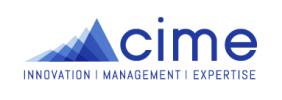Executive summary in english
24 Sep 2020
Cahier n°2 : Exploring agility in the context of R&D
Since it emerged in the early 1990s, the multifaceted notion of organisational agility has become synonymous with flexibility, fluidity, movement, lightness, responsiveness and freedom. Academic literature by pioneers Rick Dove, Steven Goldman and Kenneth Preiss presents it as the new source of value creation, the new key for individuals, teams and companies to strive and exist in a volatile, uncertain, complex and ambiguous environment, the famous “VUCA world.” Organisations therefore need to be agile, and the projects and the methods used to support these transformations need to be agile.
Agility is often associated with acceleration, a more general trend affecting society as a whole. According to the German sociologist Hartmut Rosa this is a major feature of modernity. The cult of urgency and its corollary, impatience, is gaining ground with all the stakeholders in the company: everything must be done « immediately and quickly ».
R&D is no exception and has undergone profound changes in recent years. At the heart of these transformations, agility is seen by managers as an imperative. It is largely justified by the market’s increasingly pressing demand for innovation, and it is fuelled by the speed, real or supposed, with which the competition responds. Organisational agility, which reflects a company’s ability to sense market changes and address them, has been widely seen as the key capability for adjusting product innovation quickly and appropriately in order to seize emerging opportunities. This agility makes companies responsive to relevant valuable market information and able to make decisions in product innovation. It also facilitates the effective execution of new innovation plans.
Although practices based on the notion of agility present obvious advantages, not much is known about their real impact on innovation and the performance of R&D teams, a subject which remains somewhat controversial. Which practices are actually implemented? What obstacles and challenges do they present? Four case studies of industrial companies provide an opportunity for an in-depth analysis to gain an understanding of agility in R&D contexts and of the different practices as well as the problems encountered in their implementation by shedding light on a wide variety of topics:
- The contrasting representations of agility
- A shared understanding of the issue which pervades the diversity of practices that find echoes in different business sectors and in the polysemy of the notion of agility: a notion based on methods, but which also represents a mindset and a culture
- The conviction of the need for profound transformation
Over and beyond the particularities of the representations of agility which may prevail in different companies, they all share the conviction that it is not enough to simply adopt the latest best practices or methods. A strong commitment to agility implies important changes at different levels:
- First of all, at the strategic level, leading to a different approach in preparing for the future
- Secondly, at the operational level, in the manner of organising and coordinating project portfolios
- And at a less visible level, by seeking to change the organisational culture and the mindset of the employees, something which requires sustained effort
Regarding the last point, internal cooperation and the management of interfaces, particularly between the different research programmes or R&D teams, represent difficult challenges. Internal cooperation is particularly influenced by organisational culture. Such aspects as working in silos, focusing on formal procedures and the constant challenging of the contributions made by innovation departments and programmes are perceived as obstacles to agility. The use of demonstrators – internal projects designed to assess the feasibility of a technical innovation – is emerging as a practice but also brings to light the difficulties of cooperation.
The opening up of the ecosystem to a network environment while resorting to the creation of external organisations to gain agility are avenues being pursued by the companies in the case studies. Existing structural constraints are pushing them to create this type of organisation using management methods that are more open and conducive to improvisation. They are also exploring more extensively approaches in open innovation within their sectors at regional and international levels. Networking is being developed based on the establishment of new relationships with competitors, suppliers, customers, and universities. This presents a great diversity of practices: incubation with external partners, development of strong links with companies in the same sector, workshops with suppliers, and other forms of cooperation aimed at setting up agile structures within the ecosystem.
Beyond simply identifying the company practices and the pitfalls in their implementation, which are simply described, the study reveals two aspects: the fact that agility is global in nature and that it subjects companies engaged in an agile process to paradoxes.
The study of the achievements of the companies concerned shows that the agility of R&D organisations resides not so much in the adoption of different practices than in the ways these practices are assembled in a globally consistent manner. Agility then gives rise to a host of paradoxes given the seemingly contradictory requirements it entails and which give rise to tensions between timelines, structural choices, and risk taking.
In conclusion, it seems to us that the study we have conducted can help companies to better reflect upon how they want to introduce more agility in their R&D activities while avoiding the temptation to blindly follow fashionable trends, a common occurrence in organisational management. How do we propose they do this? We suggest they try considering their goal of agility in their design processes as a part of their transformation process.
